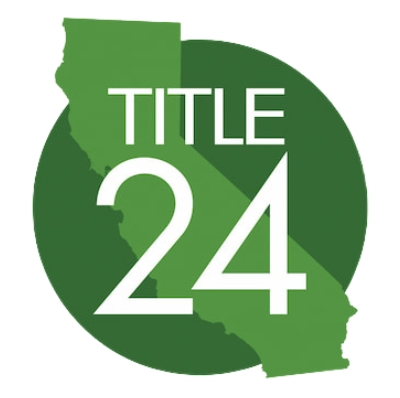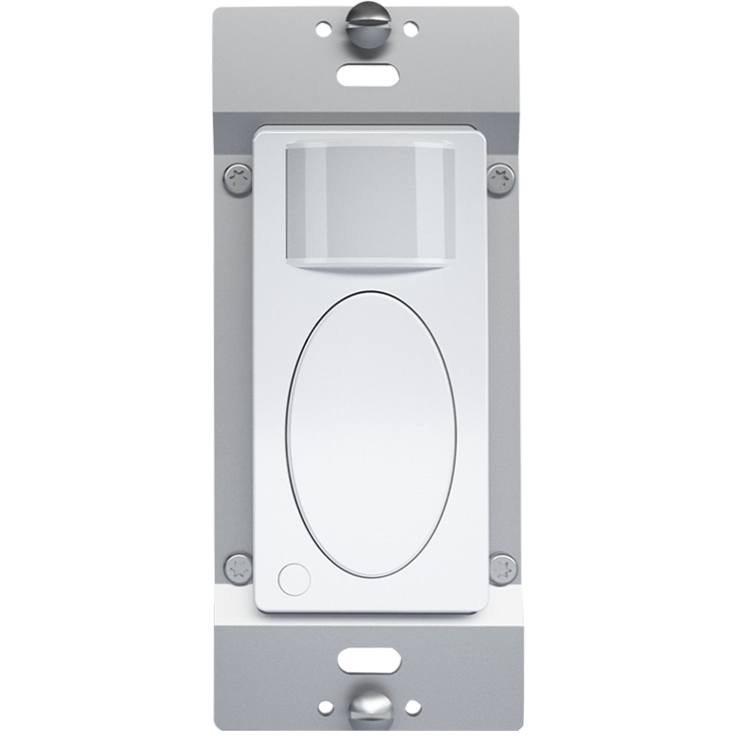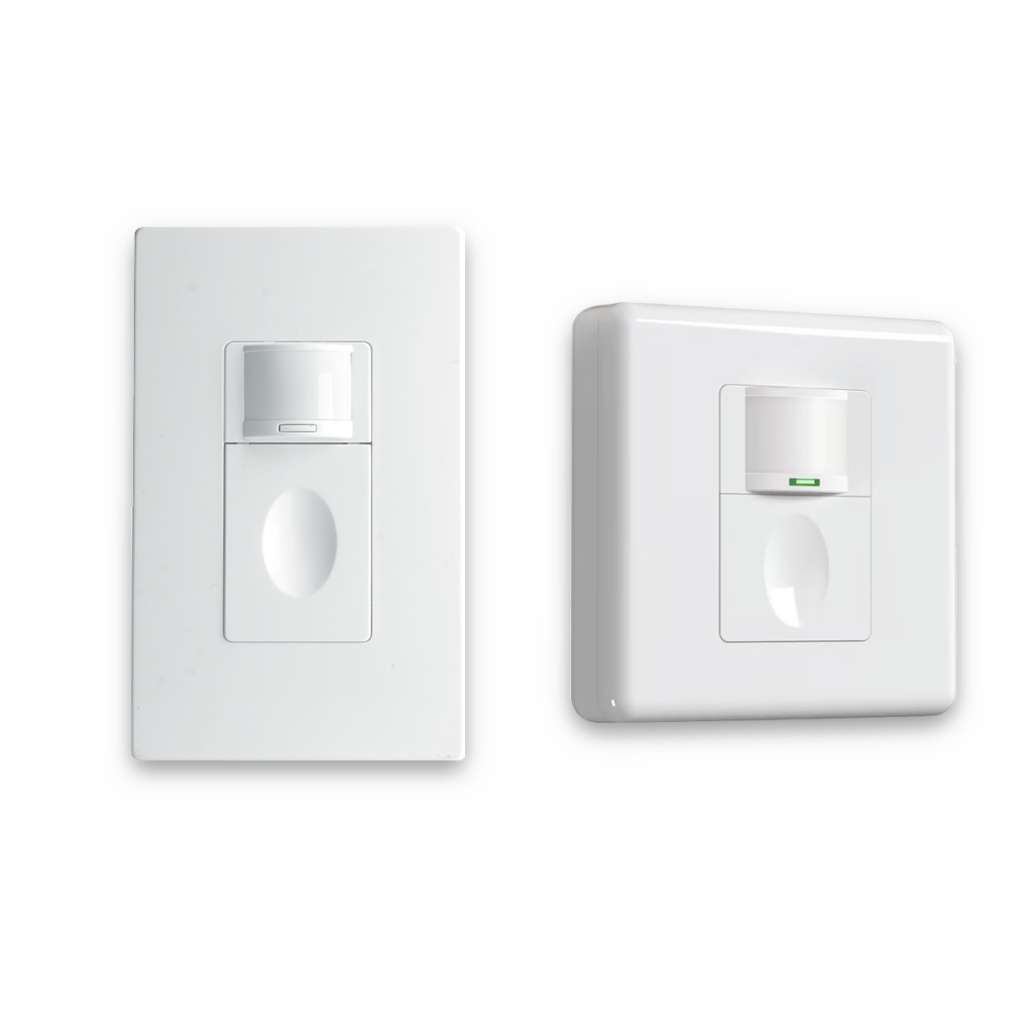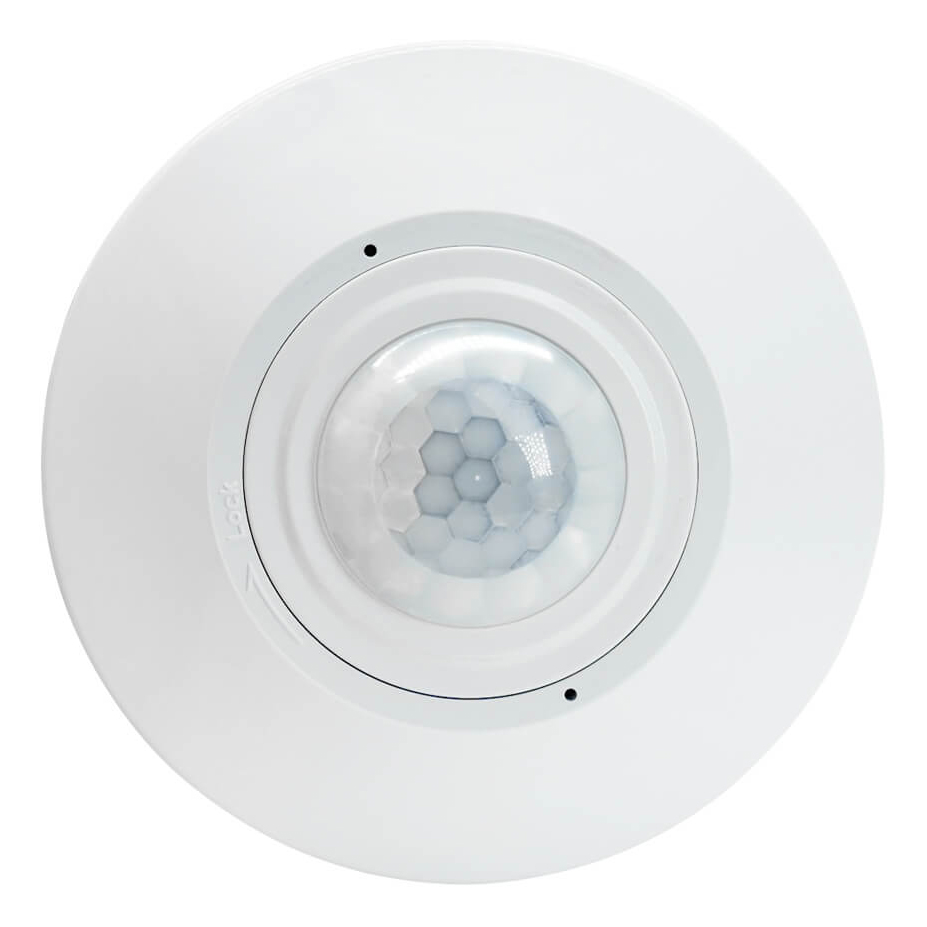
Private Offices
Discover energy-saving solutions for private offices with Rayzeek’s occupancy sensor design guide. Learn how to meet energy code requirements while optimizing lighting control for efficiency and comfort.

Optimize Energy Use in Private Offices with Smart Lighting Control
Private offices are individual workspaces, often enclosed by walls and a door, providing a quiet and focused environment for tasks that require concentration. These spaces are typically equipped with overhead lighting and task lighting, which can contribute significantly to the overall energy consumption of a commercial building.
Despite their benefits, private offices often face the issue of lights being left on when the space is unoccupied, leading to unnecessary energy waste. This is particularly problematic given that private offices are not continuously occupied throughout the day, with occupants often leaving for meetings, breaks, or other tasks.
To address this issue, occupancy sensors offer an effective solution. These devices can automatically turn off lights when the office is vacant, significantly reducing energy consumption. By integrating occupancy sensors into private offices, businesses can not only meet energy code requirements but also achieve substantial energy savings and improve their sustainability efforts.
Meet the Energy Codes

The International Energy Conservation Code (IECC) is a model code developed by the International Code Council (ICC) to establish minimum design and construction requirements for energy efficiency in buildings. The IECC is updated every three years to incorporate the latest in energy conservation practices and technologies.
IECC, Why You Should Care
IECC is widely adopted by states and municipalities across the United States. IECC covers various aspects of energy use, including the building envelope (walls, roofs, and windows), heating and cooling systems, and lighting systems.
IECC mandates specific lighting controls, such as occupancy sensors, to minimize energy wastage in unoccupied spaces in various areas.

ANSI/ASHRAE/IES Standard 90.1, Energy Standard for Sites and Buildings Except Low-Rise Residential Buildings, is a widely recognized energy standard published by the American Society of Heating, Refrigerating and Air-Conditioning Engineers (ASHRAE).
ASHRAE 90.1, Why You Should Care
ASHRAE 90.1 is used as a benchmark for building energy codes across the United States and serves as a compliance path within the IECC which outlines minimum requirements for the energy-efficient performance of commercial buildings’ components including building envelopes, HVAC systems, water heating systems, and lighting systems.
ASHRAE 90.1 standard specifies maximum allowable lighting power densities and minimum lighting control requirements, including the use of occupancy sensors in specific areas.

Title 24, part 6 of the California Building Standards Code, officially known as the Building Energy Efficiency Standards for Residential and Nonresidential Buildings, Title 24 is administered by the California Energy Commission and is updated periodically to reflect new energy efficiency technologies and methods.
Title 24, Why You Should Care
Title 24 is known for its rigorous requirements, often considered more stringent than those found in many other energy codes across the United States. Title 24 mandates strict energy performance standards for all aspects of building construction, which includes heating, ventilation, air conditioning (HVAC), water heating, and lighting.
Title 24 requires the installation of occupancy sensors that adjust lighting based on room occupancy in specific areas of commercial buildings to ensure that energy is not wasted.
Energy Code Adoption by State

Expand to see the detailed table ↓
| State | Current Commercial Code | Commercial Code Efficiency Category |
|---|---|---|
| Alabama | 90.1-2013 | 90.1-2013 |
| Alaska | None statewide | No statewide code |
| Arizona | Home rule | <90.1-2007 |
| Arkansas | 2009 IECC and 90.1-2007 | 90.1-2007 |
| California | 2022 Building Energy Efficiency Standards | 90.1-2019 |
| Colorado | Home rule | No statewide code |
| Connecticut | 2021 IECC and 90.1-2019 | 90.1-2019 |
| Delaware | 2018 IECC and 90.1-2016 | 90.1-2013 |
| District of Columbia | 90.1-2013^ | 90.1-2019 |
| Florida | 2021 IECC and 90.1-2019^ | 90.1-2016 |
| Georgia | 2015 IECC and 90.1-2013^ | 90.1-2013 |
| Hawaii | Home rule | 90.1-2013 |
| Idaho | 2018 IECC and 90.1-2016 | 90.1-2013 |
| Illinois | 2021 IECC and 90.1-2019 | 90.1-2019 |
| Indiana | 90.1-2007 | 90.1-2007 |
| Iowa | 2012 IECC and 90.1-2010 | 90.1-2007 |
| Kansas | Home rule | No statewide code |
| Kentucky | 2012 IECC and 90.1-2010 | 90.1-2007 |
| Louisiana | 2021 IECC and 90.1-2019^ | 90.1-2016 |
| Maine | 2015 IECC and 90.1-2013 | 90.1-2013 |
| Maryland | 2021 IECC and 90.1-2019^ | 90.1-2019 |
| Massachusetts | 2018 IECC and 90.1-2016^ | 90.1-2019 |
| Michigan | 2015 IECC and 90.1-2013^ | 90.1-2013 |
| Minnesota | 90.1-2019^ | 90.1-2019 |
| Mississippi | None statewide | No statewide code |
| Missouri | Home rule | No statewide code |
| Montana | 2021 IECC and 90.1-2019 | 90.1-2019 |
| Nebraska | 2018 IECC and 90.1-2016 | 90.1-2013 |
| Nevada | 2018 IECC and 90.1-2016 | 90.1-2013 |
| New Hampshire | 2018 IECC and 90.1-2016^ | 90.1-2013 |
| New Jersey | 90.1-2019 | 90.1-2019 |
| New Mexico | 2021 IECC and 90.1-2019^ | 90.1-2019 |
| New York | 2018 IECC and 90.1-2016^ | 90.1-2016 |
| North Carolina | 2015 IECC and 90.1-2013^ | 90.1-2010 |
| North Dakota | Home rule | No statewide code |
| Ohio | 2021 IECC and 90.1-2019^ | 90.1-2016 |
| Oklahoma | 2006 IECC and 90.1-2004 | <90.1-2007 |
| Oregon | 90.1-2019 | 90.1-2019 |
| Pennsylvania | 2018 IECC and 90.1-2016 | 90.1-2013 |
| Rhode Island | 2018 IECC and 90.1-2016^ | 90.1-2013 |
| South Carolina | 2009 IECC and 90.1-2007 | 90.1-2007 |
| South Dakota | Home rule | No statewide code |
| Tennessee | 2021 IECC and 90.1-2013 | 90.1-2007 |
| Texas | 2015 IECC and 90.1-2013 | 90.1-2013 |
| Utah | 2021 IECC and 90.1-2019^ | 90.1-2019 |
| Vermont | 2021 IECC and 90.1-2019^ | 90.1-2019 |
| Virginia | 2021 IECC and 90.1-2019^ | 90.1-2019 |
| Washington | 2018 Washington State Energy Code | 90.1-2019 |
| Tennessee | 2012 IECC and 90.1-2010 | 90.1-2007 |
| Texas | 2015 IECC and 90.1-2013 | 90.1-2013 |
| Utah | 2021 IECC and 90.1-2019^ | 90.1-2019 |
| Vermont | 2018 IECC and 90.1-2016^ | 90.1-2019 |
| Virginia | 2021 IECC and 90.1-2019^ | 90.1-2019 |
| Washington | 2018 Washington State Energy Code | 90.1-2019 |
| West Virginia | 90.1-2013 | 90.1-2013 |
| Wisconsin | 2015 IECC and 90.1-2013^ | 90.1-2010 |
| Wyoming | Home rule | No statewide code |
- ^ When an amendment impacting energy efficiency can be quantified using DOE Prototype Building Models, they were captured in the analysis.
- For states adopting both IECC and 90.1, the IECC code is usually analyzed as the state current code in this study except for states with extensive amendments to the IECC.
Design Guide Key Concepts for Private Offices
Designing an energy-efficient lighting control solution for private offices involves strategic placement of occupancy sensors to ensure comprehensive coverage of the space.

- Sensor Placement: Position the sensor to cover the main areas of activity, such as the desk and the entrance. The sensor should have a clear line of sight to these areas, unobstructed by furniture or other objects. For private offices, wall-mounted sensors or ceiling-mounted sensors can be effective, depending on the room layout and furniture arrangement.
- Coverage of Minor Movements: Ensure that the desk area falls within the minor motion coverage area of the sensor. This means that even small movements, such as typing or turning pages in a book, should be detected by the sensor to prevent the lights from turning off while the space is occupied.
- Avoidance of Obstructions: If using wall-mounted sensors, ensure that tall furniture like bookcases does not block the sensor’s view of the room. Similarly, the sensor’s view should not be blocked by the door when it’s open.
- Entrance Coverage: The sensor should have a clear view of the entrance to detect occupancy as soon as someone enters the room. If the door blocks the sensor’s view when open, consider using an additional sensor to cover the entrance.
- Avoidance of Interference: Sensors should not be mounted close to air vents, as the vibration and air flow can reduce their effectiveness.
- Manual Control: Incorporate manual controls for occupants to turn the lights ON/OFF as needed. These controls should be conveniently located, often near the entrance.
Featured Products & Solutions
Core features included:
- Integrated manual ON/OFF control for all lighting
- Vacancy sensors (Manual ON only): Lights must be turned on manually only
- Adjustable time-delay, lighting is automatically turned full OFF after 15mins
- Additional: multi-location wireless kits to expand the control range without re-wring
- Additional: multiple wiring options available for both new constructions and retrofit projects.

Meets the Mandatory Provisions
IECC – 2011
C405.2.1 Occupant sensor controls
Occupant sensor controls shall be installed to control lights in the space.
For private/small offices <300 sq. ft:
C405.2.1.1 Occupant sensor control functions
- Manual on or partial on to no more than 50% power.
- Full off within 20 minutes after all occupants have left the space
- A manual control to turn off the lights.
ASHRAE 90.1 – 2022
For private/small/enclosed offices <300 sq. ft:
9.4.1.1 a Local control
There shall be one or more manual lighting control device that provides ON and OFF control
of all lighting in the space.
9.4.1.1 b Restricted to manual ON
None of the lighting shall be automatically turned on
9.4.1.1 c Restricted to partial automatic ON
No more than 50% of the lighting power for the general lighting shall be allowed to be automatically turned on
** NOTE: At least one 9.4.1.1 b or 9.4.1.1 c shall be implemented.
9.4.1.1 H Automatic full OFF control
All lighting in the space shall be automatically shut off within 20 minutes of all occupants leaving the space
Title 24 – 2022
For private/small offices <250 sq. ft:
130.1 (a) Manual area controls.
Each area enclosed by ceiling-height partitions shall provide lighting controls that allow the lighting in that area to be manually turned on and off.
130.1 (c) Shut-OFF Controls.
Lighting shall be controlled with occupant sensing controls to automatically shut OFF all of the lighting in 20 minutes or less after the control zone is unoccupied that shall function either as:
- A. Occupant sensing controls (if 130.1(b) not required to have multi-level lighting controls); or
- B. Partial-ON occupant sensing controls, or
- C. Vacancy sensing controls, where all lighting responds to a manual ON input only
Let us hear you.
Let Rayzeek help design and deliver a bespoke energy-saving lighting solution for you.




